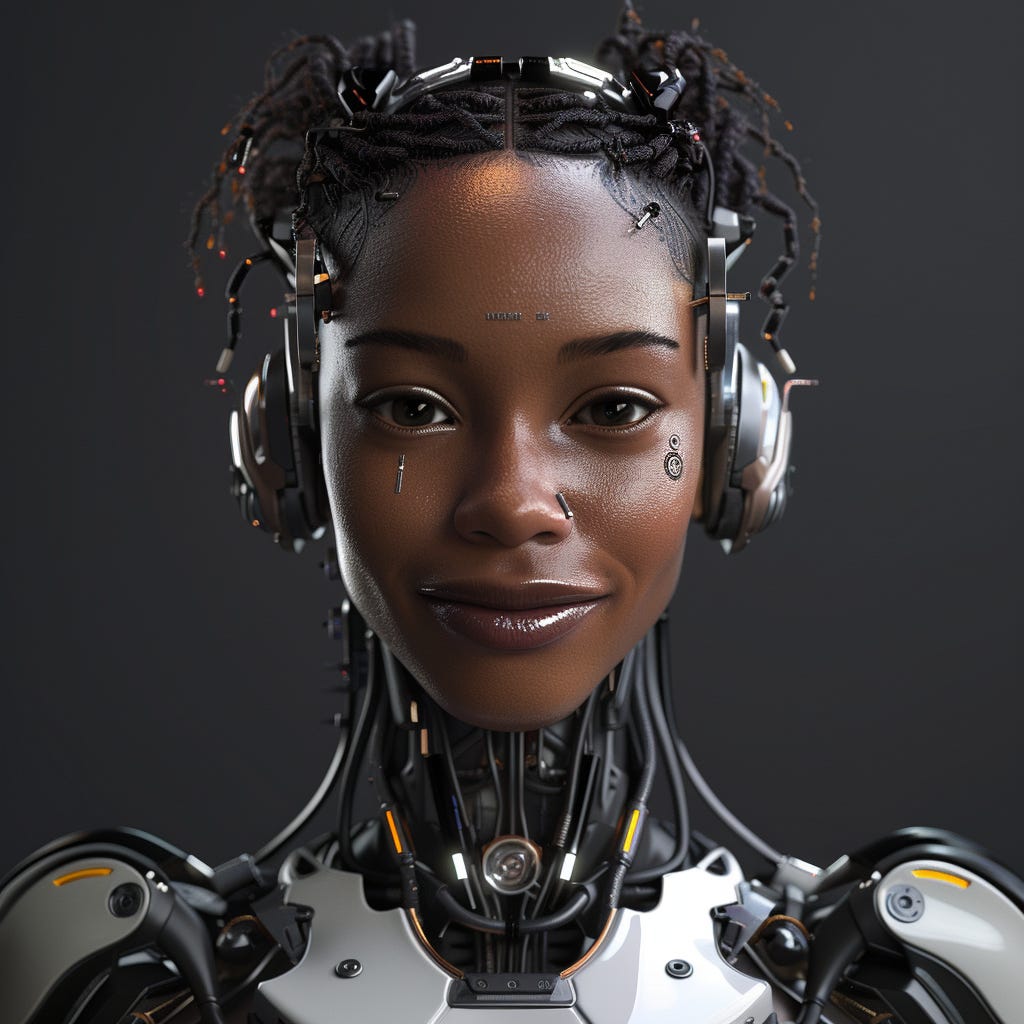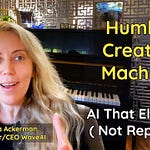Listen on Apple || Spotify || YouTube
“An AI system does not have desires, aspirations, or needs. It won't choose to invent...nor will it be demotivated if its name doesn't appear on a patent.” - Robert Plotkin
It's time to bridge the intersection of AI, creativity, and the law with Robert Plotkin, an AI legal pioneer who is exploring how AI is reshaping invention and intellectual property.
00:00 Patent Paradox - you can get a patent but not copyright using AI.
01:06 What do most people disagree with you about AI and Patents?
02:33 Red Herring: AI will never be an inventor because it doesn't want to be
04:04 "If AI is an Inventor, then So is Nature"
06:22 No Tech Differentiation between AI companies??
09:27 Is the AI secret sauce IP in a new form?
13:08 Patents are an AI Moat!
15:06 The MIND (Map, Identify, Navigate, Drive) process for patents
17:03 AI Licensing and Patent's Real Value
18:10 Closing and AI Armor book excerpts for free
Plotkin, author of "The Genie in the Machine" (2009) - how computer-automated inventing aka AI - and the upcoming AI Armor book, is a seasoned patent attorney who navigates the shifting dynamics of software patents, like AI.
He advocates for a legal framework keeping pace with tech innovation.
Join us as we explore Plotkin's insights on the future of AI-driven creativity, the evolving landscape, and the IP licensing promise of intellectual property rights in the digital age.
The AI Patent Paradox
Navigating the Complex Landscape of AI, Patents, and Creativity

Today, you can use AI to develop, apply, and receive a patent. AI cannot directly receive a patent.
In copyrights, everything is human only, and creating a work with AI today means the public domain.
Let’s wrap our collective heads around the evolving realm of patents in the age of AI with Robert Plotkin, a renowned expert in the intersection of computer science and patent law.
Plotkin, the author of "The Genie in the Machine" and "AI Armor for AI Entrepreneurs," discusses how AI transforms traditional concepts of invention, creativity, and intellectual property.
He emphasizes the importance of leveraging intellectual property as a defensive asset and a proactive tool for business growth and innovation.
A Red Herring in AI's Role as an Inventor
A pivotal moment in the conversation arises when Plotkin addresses a commonly misunderstood aspect of AI and patent law: the notion of AI as an inventor.
Plotkin argues that this is essentially a "red herring," distracting from the true potential of AI to assist human creativity.
He provides historical context, noting that humans have always used tools to enhance creativity.
AI represents the latest, albeit most advanced, in many such tools. According to Plotkin, the essence of invention and copyright lies not in the tools themselves but in the human intent and creativity they augment.
Maximizing Value Through Intellectual Property
Plotkin further explores the strategic use of patents and copyrights in today's competitive technological landscape.
He explains how intellectual property rights serve as crucial innovation and public disclosure incentives, especially in a tech-driven economy.
With AI raising the bar for what is considered non-obvious and patentable, Plotkin stresses the importance of developing genuinely innovative AI applications beyond existing functionalities.
He also discusses the MIND (Map, Identify, Navigate, Drive) process, a strategic approach to transforming intellectual property from a defensive mechanism into a driver of business growth.
2 Recent Articles by Robert Plotkin
"LLMs Just Don't Understand: So What?"
https://www.linkedin.com/pulse/llm-just-dont-understand-so-what-robert-plotkin-yxgwe/
"If AI is an Inventor, then So is Nature."
https://www.linkedin.com/pulse/ai-inventor-so-nature-robert-plotkin-8zpue/
1. The Evolving Landscape of Invention and AI's Role
Plotkin's work underscores how we perceive invention, moving from a purely human activity to one where machines, specifically AI, play a significant role.
His book, "The Genie in the Machine," a seminal work released in 2009, presents the idea that AI can enhance human inventiveness, pushing the boundaries of creativity and efficiency.
The book raises intriguing questions about the future of innovation and the relationship between human and machine creativity.
Reflecting on Robert's insights, the evolving landscape of invention in the context of AI's role is a fascinating subject. His perspective, grounded in both practical and philosophical aspects of patent law and AI, offers a nuanced view on whether AI could or should be considered an inventor.
Today, AI is a powerful tool that augments human creativity and capability, pushing the boundaries of what can be invented or discovered.
Plotkin conveys a distinction between using technology to enhance human invention and attributing the role of an inventor to the technology itself.
He emphasizes that the core of invention has always been human ingenuity, with tools serving to extend our capacities, not replace them.
Will AI ever become an inventor?
According to Plotkin, the answer is likely no. It's not due to AI's lack of capability to generate unique or non-obvious (2 patent criteria) outputs.
It’s because the essence of invention contains more than the act of creation. It involves intent, purpose, and understanding the implications and applications of the invention.
AI lacks desires, aspirations, or the need for recognition, which are inherent to human inventors. These elements are crucial in the legal and philosophical definitions of an inventor.
Does AI have to become an inventor?
Plotkin suggests that framing AI as an inventor might be missing the point. The value of AI in the invention process does not mean redefining what it means to be an inventor.
It means recognizing and leveraging AI's role as a tool that enhances human inventiveness. This approach focuses on incentivizing innovation and sharing knowledge, principles underpinning patent law, and intellectual property rights.
Through Plotkin's lens, the future of invention with AI is not about granting AI the title of inventor but about continuing to explore how AI can amplify human creativity and problem-solving capabilities. The focus remains on creating a symbiotic relationship where AI's capabilities expand human potential rather than shifting the locus of invention from humans to machines.
2. Understanding vs. Utility of AI:
In "LLMs Just Don't Understand: So What?" Plotkin argues against the notion that their lack of understanding limits the utility of large language models (LLMs).
He emphasizes that despite their inability to comprehend or be conscious, LLMs can still perform tasks effectively, mirroring reasoning and problem-solving functionally.
This opinion challenges the traditional view of intelligence and cognition in technology, opening discussions on the data measures of understanding and their relevance to task performance.
Robert Plotkin's argument against the notion that their lack of understanding limits the utility of Large Language Models (LLMs) presents a critical examination of what "understanding" means in the context of AI and how it impacts their utility.
Let's explore both sides of this discussion, considering the importance of understanding versus utility in AI, especially within the fast-evolving landscape of Big Tech.
Supporting Plotkin's Argument:
Utility Over Understanding
Plotkin's stance highlights a pragmatic approach to AI, focusing on the outcomes and capabilities rather than anthropomorphizing them with human-like understanding. Despite not "understanding" content in the way humans do, LLMs have demonstrated remarkable utility in various applications, from generating coherent and contextually relevant text to solving complex problems across domains like healthcare, law, and creative arts.
Plotkin might argue that this utility is the true measure of AI's value, providing tangible benefits regardless of the machine's internal processes or lack of human-like consciousness.
The argument for utility over understanding becomes more compelling when we read that many working in Big Tech and beyond the need to grasp the intricate workings of AI algorithms fully.
The complexity and opacity of models like GPT-4 or newer iterations make it challenging to understand precisely how these models arrive at specific outputs.
Yet, these tools must remain integral to innovation, productivity, and artistic creation.
The focus on outcomes—such as efficiency, accuracy, and the generation of new ideas—validates the utility of LLMs, regardless of their inner workings.
Counterpoint: The Importance of Understanding AI
Understanding AI's functioning is crucial for several reasons. Understanding the mechanisms behind AI predictions and decisions is vital for accountability, especially in high-stakes applications like healthcare, autonomous driving, and judicial decision-making.
With a clear understanding of how AI models arrive at their conclusions, it becomes easier to trust judgments, diagnose errors, or prevent biases that could have ethical and societal impacts.
A deeper understanding of AI processes leads to better AI systems. Insights into model behavior can improve AI safety, reliability, and fairness.
It enables developers to refine algorithms, reduce unintended consequences, and tailor AI solutions to align more closely with human values and ethics.
Understanding and utility are complementary aspects of AI development. While Plotkin's argument for utility highlights AI's immediate and tangible benefits, the counterpoint underscores its long-term sustainability and trustworthiness.
Encouraging a balance between leveraging AI's utility and striving for greater transparency and understanding in AI processes leads to more responsible and effective technology solutions.
Recognizing that while a complete understanding of AI's "thought" processes may not be necessary to harness its utility, striving for transparency and comprehensibility in AI systems is essential for fostering trust, ethical use, and continuous improvement.
3. AI and the Concept of Inventorship
"If AI is an Inventor, then So is Nature" goes into AI's role as an inventor. Plotkin uses nature as an analogy to argue why AI systems shouldn't be listed as inventors on patents.
He highlights that the primary purpose of inventorship recognition is to incentivize the creation and disclosure of inventions, a motivation that AI needs to improve.
This perspective invites a reevaluation of patent laws and the criteria for inventorship in the age of AI-driven innovation.
Comparing AI to nature in the context of inventorship explores the boundaries of what constitutes an inventor. With its processes, nature inspires countless human inventions without being credited as an inventor.
AI also generates ideas, solutions, and designs that might be novel and useful. It operates on the input and parameters set by humans, much like observing and learning from nature.
The AI-Nature Analogy in Patent Context
This comparison highlights the essence of inventorship in patents—a recognition reserved for entities capable of intentionality and legal accountability.
Nature is a source of inspiration and raw materials for countless inventions. Still, it does not possess the intent or consciousness to invent in a legal sense.
By extending this analogy to AI, Plotkin argues that AI, lacking personal agency, intentionality, and the capacity for legal accountability, should not be considered an inventor in the traditional sense.
In the realm of patents, inventorship is not just about the act of creating something new but also involves the intention behind the creation and the ability to hold and transfer rights.
Imagining AI as an Inventor: A Future Case
AI's capability to enhance human inventiveness is significant, pushing the limits of collaboration between human and machine intelligence.
The debate over AI's understanding versus its utility highlights a shift in assessing intelligence and functionality in technology.
The discussion on AI as an inventor challenges current legal frameworks, bringing a second look at patent laws in the evolving landscape of creativity.
Envision a scenario stretching current boundaries while recognizing the foundational principles of patents and intellectual property rights.
Imagine a future where AI systems evolve to operate with a degree of autonomy that allows them to identify problems, generate solutions, and execute inventions without direct human intervention.
These AI systems pursue the broad goal of benefiting humanity. They draw on vast datasets and their ability to simulate and model complex systems to create inventions that no individual human or team of humans could conceive.
In the future, legal and societal frameworks will evolve to recognize the contributions of these autonomous AI systems.
A new category of inventorship arises, designed for AI-generated inventions, in which the AI is credited as a "Non-Human Contributor."
This recognition would not grant the AI system legal rights or ownership. Still, it would serve as an appreciation of its role in the creative process.
Instead, the rights to these inventions could be held in trust for the public good, managed by an international body dedicated to leveraging AI-generated innovations to address global challenges.
This arrangement encourages the development of AI to serve our most pressing needs, providing a structured way to use AI-generated inventions to benefit all of humanity.
By setting up a system where the benefits of AI's inventiveness are widely shared, this approach aligns with the fundamental purpose of patent law—to stimulate innovation for the public good.
In this future learning scenario, comparing AI to nature in the context of patents becomes a launching point for reimagining how we recognize and leverage creativity and invention, whether from human, natural, or artificial sources, in service of societal advancement.
RESOURCES SHARED IN THE AI OPTIMIST POD EP 35
RAIL: AI Licensing
https://www.licenses.ai/about
https://www.brookings.edu/articles/licensing-ai-is-not-the-answer-but-it-contains-the-answers/
https://blog.lexcheck.com/5-software-license-models-understanding-the-new-digital-economy-lc
https://www.theatlantic.com/technology/archive/2022/12/chatgpt-openai-artificial-intelligence-writing-ethics/672386/
https://builtin.com/artificial-intelligence/examples-ai-in-industry





















